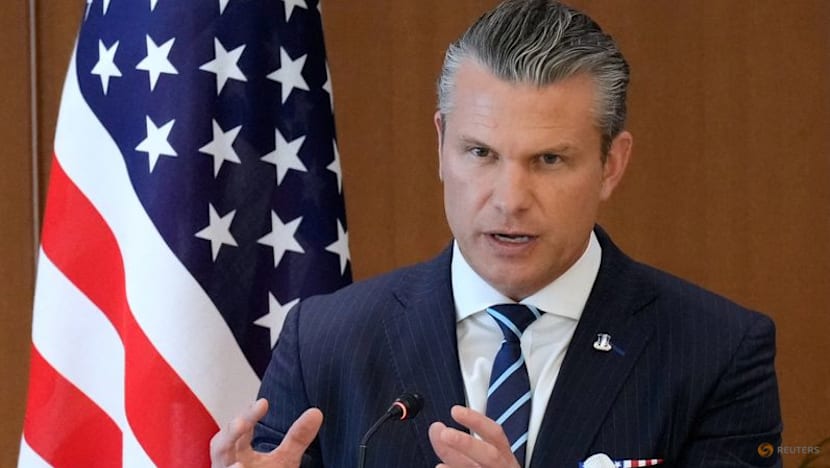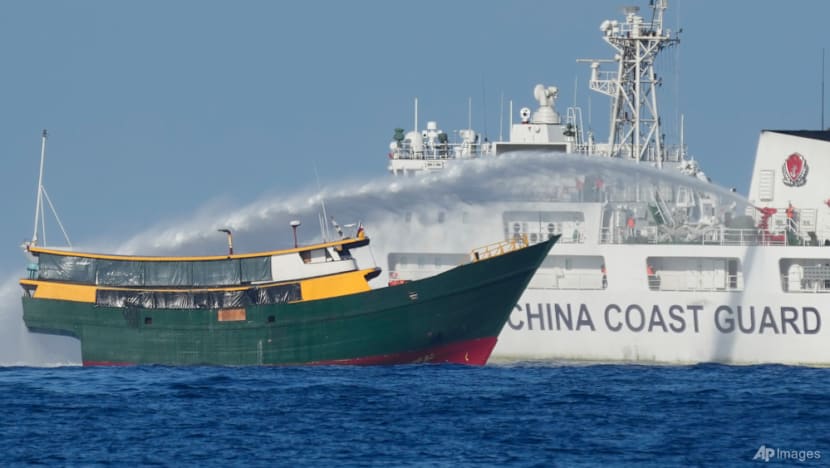US and China agree to set up direct military communication channels, says Pentagon chief
Pete Hegseth's remarks came just hours after the US defence chief urged Southeast Asian nations to stand firm and strengthen their maritime forces to counter China’s increasingly “destabilising” actions in the South China Sea.

KUALA LUMPUR: US Defense Secretary Pete Hegseth said Sunday (Nov 2) that Washington and Beijing would establish military-to-military communications channels, adding that bilateral ties between the countries have "never been better".
Hegseth said he spoke with his Chinese counterpart, Admiral Dong Jun, late Saturday on the sidelines of a regional security meeting and that they agreed that "peace, stability and good relations are the best path for our two great and strong countries".
His remarks posted on X came hours after he urged Southeast Asian nations to stand firm and strengthen their maritime forces to counter China’s increasingly “destabilising” actions in the South China Sea.
“China’s sweeping territorial and maritime claims in the South China Sea fly in the face of their commitments to resolve disputes peacefully,” Hegseth said at a meeting with his counterparts from the Association of Southeast Asian Nations (ASEAN) on Saturday.
“We seek peace. We do not seek conflict. But we must ensure that China is not seeking to dominate you or anybody else,” he added.
The South China Sea remains one of Asia’s most volatile flashpoints. Beijing claims almost the entire region, while ASEAN members the Philippines, Vietnam, Malaysia and Brunei also claim ownership of coastal areas and features.
The Philippines, a key US ally, has had frequent clashes with China’s maritime fleet.

Manila has repeatedly urged a stronger regional response, but ASEAN has traditionally sought to balance caution with economic ties to Beijing, the region’s largest trading partner.
Hegseth said on X he also spoke with President Donald Trump and they agreed "the relationship between the US and China has never been better".
Trump’s meeting with Chinese leader Xi Jinping in South Korea earlier this week “set the tone for everlasting peace and success for the US and China", added Hegseth, who left Malaysia on Sunday for Vietnam.
The contrasting messages - a sharp warning at the ASEAN meeting followed by conciliatory language online - underscored Washington’s effort to balance deterrence with diplomacy amid rising tensions with Beijing.
“This is damage control. More importantly, it reflects two different currents in US relations with China - one that sees China as a threat and another a possible partner,” said Southeast Asian political analyst Bridget Welsh.

In his meeting on Saturday, Hegseth criticised Beijing’s recent declaration of the Scarborough Shoal - seized from the Philippines in 2012 - as a “nature reserve.” He told the meeting it was “yet another attempt to coerce new and expanded territorial and maritime claims at your expense.”
He urged ASEAN to hasten the conclusion of a long-delayed code of conduct being negotiated with China to govern behaviour in the sea. He also proposed developing shared maritime surveillance and rapid-response systems to deter provocation.
A “shared maritime domain awareness” network, he said, would ensure that any member facing "aggression and provocation is not alone".
Hegseth also welcomed plans for an ASEAN-US maritime exercise in December to strengthen regional coordination and uphold freedom of navigation.

China rejects US criticism of its maritime conduct, accusing Washington of interfering in regional affairs and provoking tensions through its military presence. Chinese officials say their patrols and construction activities are lawful and aimed at maintaining security in what they consider Chinese territory.
Chinese officials Saturday slammed the Philippines for being a “troublemaker” after Manila staged naval and air drills with the US, Australia and New Zealand in the South China Sea.
The two-day exercise that ended Friday was the 12th that the Philippines says it has carried out with partner nations since last year to protect its rights in the disputed waters.
Tian Junli, spokesperson of China’s People’s Liberation Army Southern Theater Command, said the exercise seriously undermined regional peace and stability.
“It further proves that the Philippines is the troublemaker in the South China Sea issue and a saboteur of regional stability,” he said.















